For some public transport journeys, getting to a main line of public transport may involve taking a ‘feeder’ public transport service or other motorised mode.
This is particularly common for rapid transit stations (heavy rail, light rail or busway) which tend to offer a high level of service, but also tend to have more distance between stations. Some people wishing to use services from these stations may live outside of a comfortable walking or cycling distance. Feeder services can provide an important way for people to get to the rapid transit network. This section discusses ways to plan and design for seamless connections between public transport services.
For guidance on the design of interchanges to accommodate the needs of all users please refer to:
Public transport interchanges and stations
Fixed schedule public transport services have trips which depart at the same time and follow the same route each day. Fixed schedule services are the most common form of public transport in New Zealand.
There are three types of connections between fixed schedule public transport services which are:
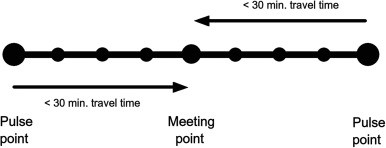
The diagram above shows the principle of pulse timetable operations along an hourly pulse network’s corridor (Source: Peterson, T.(2016). “Watching the Swiss: A network approach to rural and exurban public transport”(external link). Transport Policy. Vol 52, Pages 175-185)
For pulse and timed connections, the reliability of the connecting services is a critical consideration (especially if the frequency of the services is low). If services are unreliable, it’s difficult to ensure a reliable connection between services without having excessively long wait times for passengers.
The techniques available to address unreliable connecting services include:
Another consideration for timed connections is how compatible services headways* are between connecting services.
For example, if a connecting train service has a 30min headway, it would be best paired with connecting services that have a 60, 30 or 15min headway. A connecting service with an incompatible headway (a service every 20min, using the same example) would result in connection times that are either too long or too short, making people less likely to use the feeder service for their journey to the larger stop or station.
*See 'headways' definition in the glossary
Compatible service headways
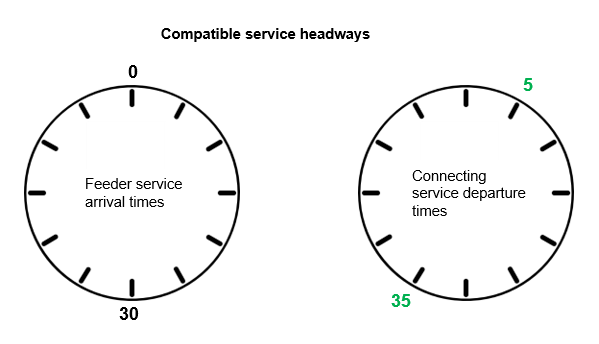
30min feeder and connecting services results in two optimal connections
Incompatible service headway
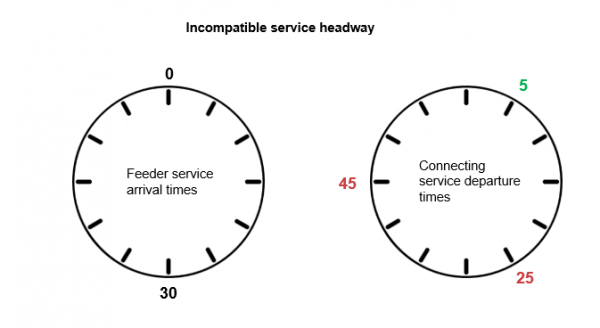
30min feeder and 20min connecting services results in one optimal connection, one long connection and one missed connection
As fixed schedule public transport services have a limited amount of time between services, it is important to minimise the distance between transfer points.
This can be achieved by prioritising public transport access over other motor vehicles when designing the interchange.
Ideally, connecting public transport services should be located immediately adjacent to the main station platforms or adjacent to the main entrance to the station.
If vehicle types are compatible (bus to bus or bus to light rail connection), then connecting public transport services could use the same platform.
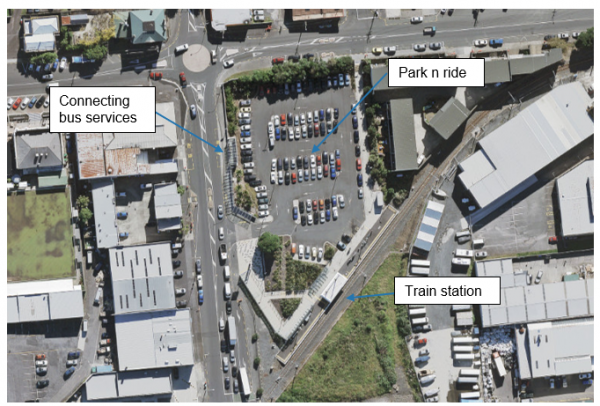
Example of interchange with poor connection between public transport services with bus services being located further away from train station than park n ride. Onehunga Station, Auckland (Image source: LINZ, NZTA, Eagle Technology)
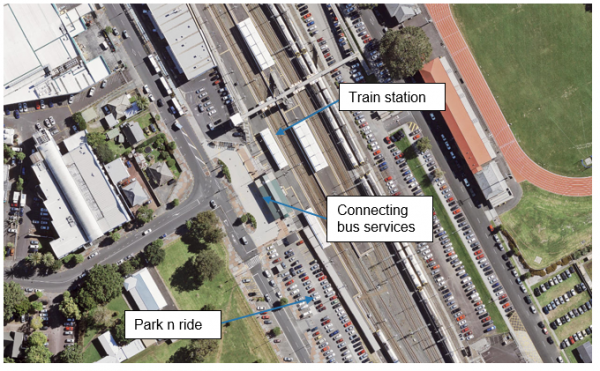
Example of interchange with good connections between public transport services with bus services being located outside main entrance to the station. Papakura Station, Auckland (Source: Auckland Council)
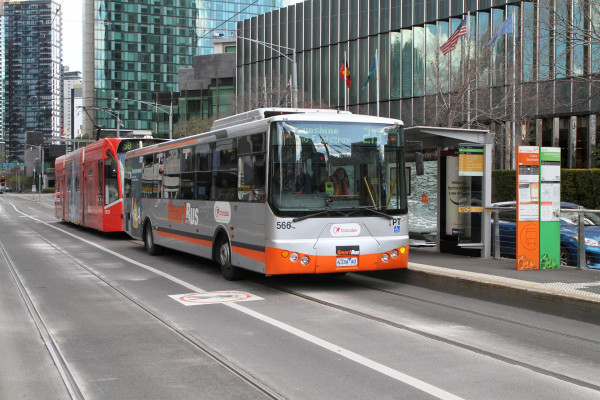
Example of bus and tram services sharing the same platform at Queens Bridge Street, Melbourne (image source: Marcus Wong)
Other design considerations for enabling seamless transfers include:
*See 'step-free routes' definition in the glossary
On-demand public transport services have flexible routes and timetables which change based on the location and destinations of passengers who book a trip.
Some on-demand public transport services require passengers to walk to fixed stop locations (which may or may not have bus stop infrastructure) while others pick passengers up from their driveways.
For some on-demand services, passengers are limited to set destinations with other on-demand services dropping passengers at any destination within a fixed area. On-demand public transport services are a new addition to the public transport system in New Zealand, with trial services taking place in Timaru and Devonport, Auckland.
The level of infrastructure required for on-demand public transport services at stations will depend on frequency, vehicle size and various operational characteristics which affect dwell time. The station infrastructure required for on-demand public transport could range from a dedicated priority parking spot for a low volume small vehicle service, to a length of kerb space for a higher volume or medium to large vehicle operated service.
Additional considerations for the design of on-demand public transport infrastructure at interchanges includes:
On-demand public transport services can provide an important connection to the wider public transport network. Compared to fixed schedule services, on-demand services have the following advantages and disadvantages:
|
Advantages |
Disadvantages |
|
|
Depending on the transport options, local land use and people’s preferences, some areas may be more efficient to serve with on-demand public transport while others would better suit fixed schedule public transport.
A public transport network can have both on-demand and fixed route services, working together to maximise access to public transport. In this approach, fixed schedule services would provide direct connections between main destinations and on-demand services would provide coverage for low density outer areas.
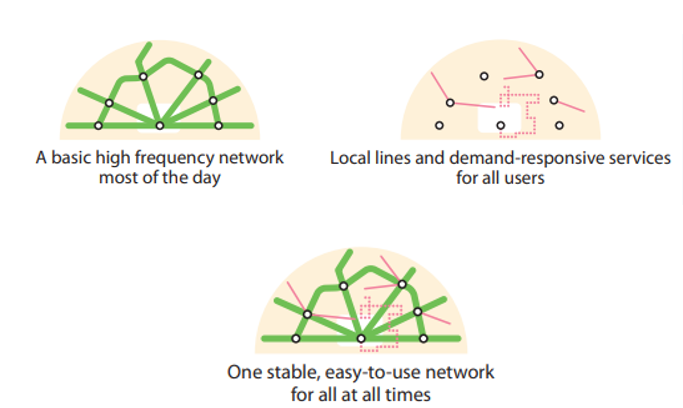
Network design approach incorporating fixed schedule and on-demand services (adapted from Nielsen, G. HiTrans Best practice guide to Public Transport – Part 2 Planning the networks, Illustration by Truls Lange)